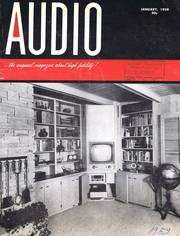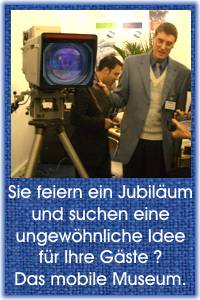Erläuterungen zu diesen US-AUDIO Seiten der 1950er Jahre
Die hier stehenden amerikanischen Artikel aus 1959 (aus der US-AUDIO) sind teilweise sehr gewöhnungsbedürftig, weil sie erstens aus einer längst vergangenen Zeit stammen und zweitens, weil dort in den USA ganz "anders" gedacht wurde als bei uns in Old Germany oder in Europa.
Vergleichbar mit unseren deutschen Hifi-Magazinen etwa ab 1962 ist jedoch, daß auch dieses Audio-Magazin ihre Anzeigen- Kunden und -Leser am Markt oder von anderen Magazinen (be- oder ab- ?) werben mußte. - Weiterhin sind die riesigen Dimensionen des amerikanischen Kontinents mit unseren hier in Europa nicht vergleichbar. - Ein Redaktions-"Trip" von New York nach Los Angeles oder Chicago oder gar in die Wüste nach Las-Vegas zu einer der CES- Audio- "Shows" war - auch mit dem Flugzeug - immer noch eine halbe Weltreise. Und jede Ausstellung oder "Messe" wurde als "Show" deklariert. Und natürlich, in USA musste alles "Show" sein, um beim Publikum einige Aufmerksamkeit zu erzeugen.
.
ABOUT MUSIC - The Piano vs. the Harpsichord (Cembalo)
"Die Rückkehr des Cembalo"
Ever since the end of the 18th century, when it lost its pre-eminent position in the keyboard world, the harpsichord has been maligned, maltreated, and misunderstood. To the Eomantic Age, its musical value had been totally demolished by the advent of the new pianoforte, next to which it appeared as primitive as the electric friction machine is to the storage battery. It seemed as if the harpsichord, along with the shawm, cornett, and serpent, was to be relegated to museum exhibits and music encyclopedias.
References to the sound the harpsichord made were contemptuous - a custom that has continued to the present time. Yaughan Williams, for example, compared the harpsichord to the "ticking of a sewing machine") another critic described its tone as "a scratch with a sound at the end of it"; and even Virgil Thomson, who is pro-harpsichord, wrote of a harpsichord recital as "a shower of needles."
Throughout the 19th century, the harpsichord was absent from the musical scene. Its reappearance was brought about by the turn-of-the-century reaction against German romanticism, bringing with it a fresh evaluation of early music.
Little by little, the 19th-century attitude towards music written before Beethoven's Eroica gave way to a more enlightened approach.
Discerning musicians chose to bypass transcriptions of early music and went directly to the source, investigating original scores, studying performance standards of the Baroque and Eenaissance periods. Instruments such as the recorder, viola d'amore, and harpsichord were utilized in order to recreate the sound as well as the style of the early works.
While it must be frankly admitted that, to the general public, Bach's sonatas for violin (unaccompanied) performed with "Bach" bow, or Purcell's Fantasias played by a "chest of viols" is of little more than academic interest, harpsichord recitals have become popular features of today's concert life, thanks to the pioneering work of Wanda Landowska, who has regularly performed for sold-out houses and whose recordings often outsell other instrumental releases in the RCA Victor catalog. Landowska's recording of Bach's Goldberg Variations, for instance, sold more than 35,000 copies during the first six years of its release.
The nature of the harpsichord's return to the 20th century after more than a century's retirement, indicates that its life cycle is far from completed. Unlike the viola da gamta, whose growth long ago reached its final stage, the harpsichord is very much alive. Contemporary composers have written works especially for it, manufacturers have made various changes in its design and construction over the past fifty years, and the demand for new harpsichords has reached an all-time high in our time.
Ob das Cembalo das Klavier verdrängt ?
There is hardly any danger of the harpsichord displacing the piano, as was the case in reverse in the last years of the 18th century. The piano is and will remain the leading keyboard instrument. More to the point is the fact that the harpsichord possesses qualities which render it uniquely suited to certain musical styles and periods.
A "band of guitars" is one of many descriptions applied to the harpsichord, whose strings are plucked by quills or leather-point plectra.
Basically, the mechanism operates in the following manner: A key is depressed, raising an upright wooden rod ("jack") to which is attached a quill (or leather tag). The quill plucks the string, then falls back to its original position, neatly bypassing the string in its descent. At the topmost end of the jack is a damper which stops the string's vibration when the key is released.
Der Unterschied, wie die Töne erzeugt werden
The first obvious difference between the piano and the harpsichord lies in tone production. Touch plays an all-important role in piano technique where hammers strike strings.
On the harpsichord, finger pressure has no significant effect on tone quality; the string is plucked only when a certain minimum force is applied, and pressure beyond this point does not appreciably alter the tone, though a really determined pounding will be heard slightly differently.
This dynamic inflexibility was recognized by early harpsichord builders who added a second keyboard (manual) for loud-soft contrasts. (Later instruments were built with as many as four manuals.)
Different timbres were obtained from the same keyboard through the use of multi-jack mechanisms. That is, several jacks were mounted along the same string, tonal variety being achieved by means of (1), differing plectra material and (2), position of the jacks on the string (just as in violin playing, variety in dynamics and tone color can be accomplished at different points between the bridge and the finger board). Stops of 4', 8' and 16' were also incorporated, giving the harpsichord a wider range. (Bach's instrument, for example, had a 5-octave compass.) Thus, the development of the double keyboard and compass/timbre stops provided the player with an enlarged dynamic, tonal and expressive palette.
Das Cembalo ist selbst dran schuld
By itself, however, each dynamic level and tonal setting is still inflexibly produced. Once the player has selected a particular registration for a phrase or section, gradations within that framework are impossible without stop changes.
The pianist, on the other hand, is faced with no such restrictions. He may proceed from a piano to a forte without shifting gears, hence the name pianoforte.
It was the piano-forte capability that put the harpsichord out of business in the last part of the 18th century. In an attempt to compete with the first pianos, manufacturers of harpsichords adapted the "Venetian swell" to their new models.
This mechanism operated on the Venetian-blind principle, letting out or shutting in sound. It was a crude device that merely served to
underscore the natural superiority of the piano in this respect.
All the evidence would seem to indicate that the harpsichord is guilty of the charges of inflexibility, twanginess, and gross inferiority to the piano. Logically, it should have never returned to active life. But the very mechanical limitations that brought about its retirement 150 years ago now are responsible for the harpsichord's renascence.
As performed on the harpsichord, the contrapuntal texture of Baroque music emerges with marvellous clarity, especially in the mid-low range. The even dynamic levels of the harpsichord have an almost detached serenity that well befits the well-ordered fugues of Bach and the variations of Frescobaldi.
Because of the instrument's dynamic rigidity, slow movements of 17th and 18th century composers' works are sprinkled with mordents, turns, slides, and other embellishments, most of which sound out of place on the piano.
The special sound "contour" of the harpsichord was employed to full advantage by Falla in his Harpsichord Concerto and El Betablo de Maese Pedro, as well as in works by Poulenc and other moderns. Ever since Alec Wilder applied the harpsichord to popular music, it has figured prominently in Tin Pan Alley, thanks mainly to such A & E men as Mitch Miller.
The musical world is by no means undivided over the respective merits of the piano and harpsichord in works by pre-19th century composers. The instrument's majestic clang fails to palpitate the hearts of thousands of music lovers who maintain that the piano is superior in all clavier music.
There are, of course, musical areas in which the piano and harpsichord overlap. These are the areas where most disagreements take place. But the harpsichord reigns supreme in such works as Purcell's Suites, Byrd's Pavanes, Couperin's delightful tone paintings, and Pachelbel's Fugues.



